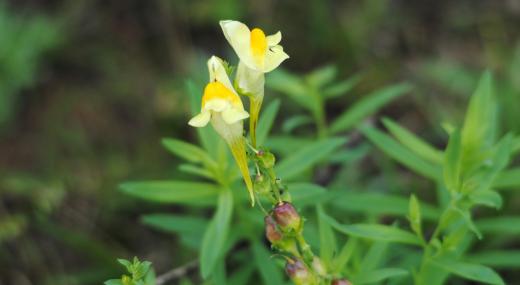Common Toadflax is a common plant of waste grounds, grasslands, roadside verges and hedgerows. Its orange and yellow flowers appear in June and can be seen well into November; they look like the flowers of snapdragons (familiar garden plants), and are often densely packed. These flowers give the plant its other common name of 'Butter and Eggs'.
Like many of our native plants, Common Toadflax is an excellent source of nectar and pollen for all kinds of insects including bumblebees and butterflies. To encourage wildlife into your garden, try planting native flower species in your borders to provide a 'nectar-cafe'. To find out more about wildlife-friendly gardening, visit our Wild About Gardens website: a joint initiative with the RHS, there's plenty of facts and tips to get you started.
